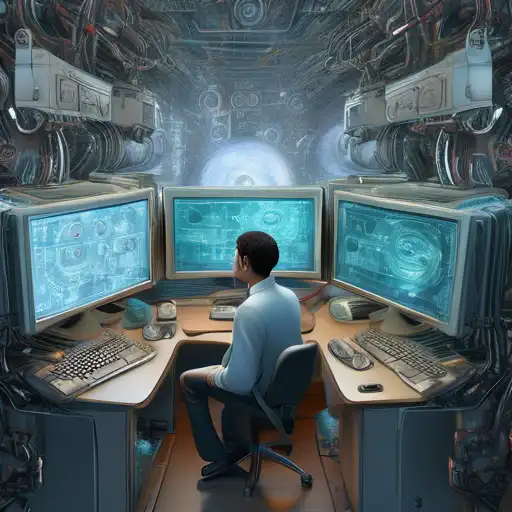Introduction to Computer Vision
Computer vision is a field of artificial intelligence that trains computers to interpret and understand the visual world. By using digital images from cameras and videos and deep learning models, machines can accurately identify and classify objects — and then react to what they "see."
How Computer Vision Works
At its core, computer vision involves the automatic extraction, analysis, and understanding of useful information from a single image or a sequence of images. This process involves several steps, including image acquisition, processing, analysis, and understanding. The ultimate goal is to emulate human vision, enabling machines to perform tasks such as recognizing faces, interpreting scenes, and even driving cars autonomously.
Applications of Computer Vision
Computer vision has a wide range of applications across various industries. Here are some of the most notable ones:
- Healthcare: From diagnosing diseases through medical imaging to assisting in surgeries, computer vision is revolutionizing healthcare.
- Automotive: Self-driving cars use computer vision to navigate roads, recognize traffic signs, and avoid obstacles.
- Retail: Automated checkout systems and inventory management are made possible through computer vision.
- Security: Facial recognition technologies enhance security systems in public spaces and personal devices.
The Role of Deep Learning in Computer Vision
Deep learning, a subset of machine learning, has significantly advanced the capabilities of computer vision. Convolutional Neural Networks (CNNs) are particularly effective for processing visual data, enabling machines to achieve high levels of accuracy in image recognition tasks. This has opened up new possibilities for real-time image and video analysis.
Challenges and Future Directions
Despite its advancements, computer vision faces several challenges, such as dealing with poor lighting conditions, occlusions, and the need for large datasets for training. However, ongoing research in areas like 3D vision and generative adversarial networks (GANs) promises to overcome these hurdles, paving the way for more sophisticated applications.
Conclusion
Computer vision is transforming how machines interact with the visual world, offering endless possibilities across industries. As technology continues to evolve, we can expect even more innovative applications that will further blur the lines between human and machine perception. For those interested in diving deeper into this fascinating field, exploring machine learning and artificial intelligence can provide valuable insights.
